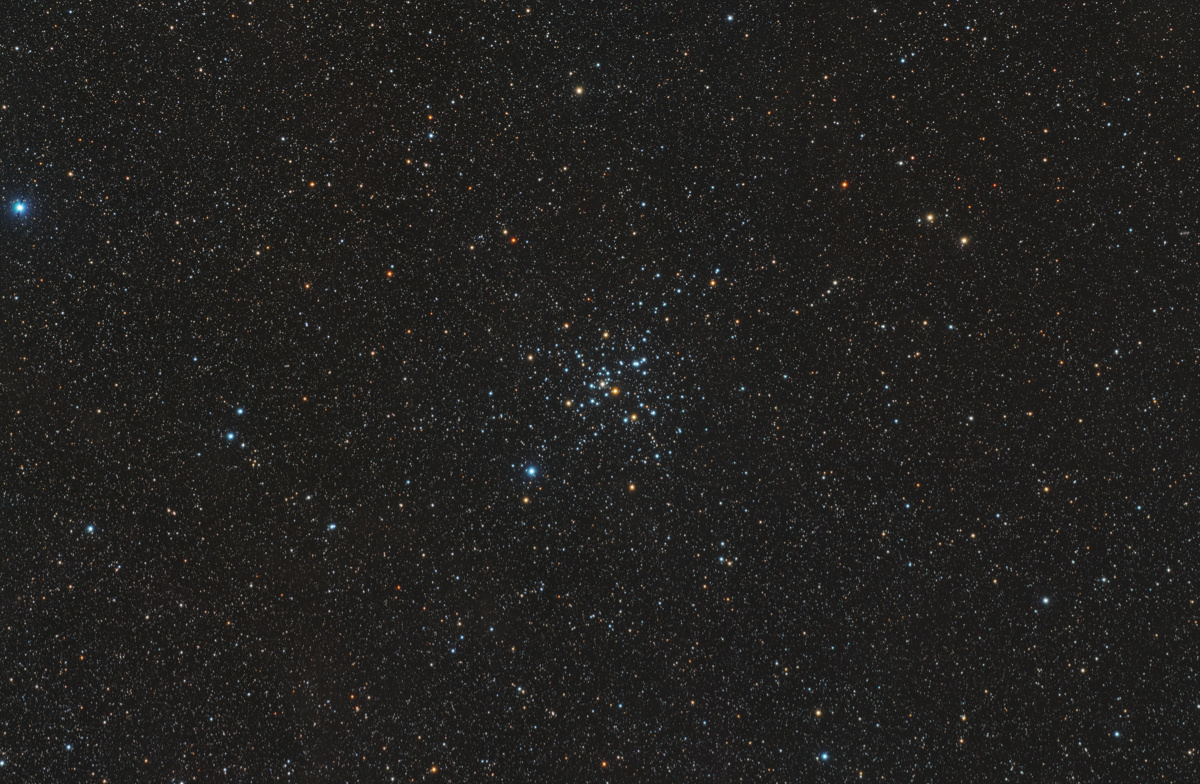
[back] M41 (Little Beehive) in Canis Major
Big, 100% image version / Große, 100% Bild-Version (8834 x 5769, 1.464"/pixel)

|
(c) 2024 All astro photo images are copyrighted. They may not be used or reproduced without explicit written permission from the authors. |
|
0.5 degree |
|
About this Image / Über dieses Bild
| Camera: | Moravian C3-PRO-61000 Mono CMOS |
| Image Type, Orientation: | L-RGB Color Composite, North is at 12:00 |
| Exposure time: | L: 16*300s R,G,B: 6*300s (2:50h total) |
| Exposure date: | Ma 4th,5th, 2024 |
| Location: | Capella Observatory South at Kiripotib Astro Farm, Namibia |
| Filter: | Astronomik Deep-Sky Deep-Sky RGB Filter set plus 6nm Ha filter on Moravian EFW-3L-9-II External Filter Wheel |
| Instrument: | "Callisto", a Takahashi FSQ 106N, 530mm focal length, 106mm aperture, f/5 on modified Losmandy G11 (high res encoders with OnStepX) |
| Photographer: | Rainer Raupach, Frank Sackenheim, Josef Pöpsel |
| Remarks: |
The open star cluster Messier 41 in the constellation of
Canis Major is also called the "Little Beehive" (in reference to M 44) and
is located about 4 degrees south of the star Sirius. With a total brightness
of 4.5 magnitudes, it can be seen with the naked eye. The age of the star cluster has been estimated to be about 200 million years [1], which is roughly in the middle of the (logarithmic) age distribution of star clusters with galactic orbits. It is likely that massive members of the cluster have already moved away from the main sequence and evolved into white dwarfs (two white dwarfs are discussed as candidates [2]). The currently brightest star in M 41 is a red giant of spectral type K3III, part of a spectroscopic binary system. BlurXTerminator was used for the image (option "correct only") |
|
|
|
| Bemerkungen: |
Der offene Sternhaufen Messier 41
im Sternbild Großer Hund wird auch „Kleiner Bienenkorb“ (in Anlehnung an M
44) genannt und befindet sich etwa 4 Grad südlich des Sterns Sirius. Mit
einer Gesamthelligkeit von 4.5 mag ist er bereits mit bloßem Auge zu sehen.
[1] The Age Distribution of Stellar Orbit Space Clumps, Fürnkranz F. et al.,
The Astrophysical Journal, Volume 961, Number 1 |
Back to the Open Clusters Overview / Zurück zur Offene-Sternhaufen-Übersichtsseite